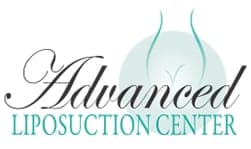Water Jet Assisted Liposuction

What happens during a liposuction treatment?
How does Water Jet Assisted liposuction work exactly? What are the newer technologies and approaches to the procedure, and how do you like them?
Dr. Giraldo: The idea is simple. Numb the region. Make an incision above the area. Then use a blunt probe attached to a surgical vacuum to break up fat deposits and suction them out. Simple, right? I’ll also put forward that I’m a big fan of WAL.
I use WAL daily. That’s Water Jet Assisted Liposuction for all the non-surgeons. A big problem, maybe the fundamental problem, is that fat deposits are fairly well attached. So it’s more like you’re ripping it out than sucking it out. That’s why liposuction just wasn’t very good in the 80s and 90s. You’d get the lumpy, bumpy look, and it was super invasive and the recovery could be rough. Did it work? Yes, most of the time. Was it easy? No. In fact for a lot of patients it just wasn’t worth it.
With Water Jet, we’re using a fan-shaped water pick, sort of like what your dentist cleans your teeth with. It breaks up the fat before we suck it out. Problems solved. Don’t get me wrong, I’ve always enjoyed doing lipos, it’s just that now I love them.
I’ll briefly touch on tumescent anesthesia. Water Jet and all the other modern techniques, all of which are fantastic, couldn’t happen without it. Tumescent anesthesia is the practice of injecting large amounts of diluted anesthetic fluid into the region. This does two things. First, It provides anesthesia. Obviously. But more than that it plumps up the tissue, making it much easier to remove.
Using a water jet to pick apart a solid fat deposit is one thing, you can do it but I wouldn’t recommend it. But when you pump in the fluid it changes everything. It’s like you’re brushing the fat away, almost layer by layer. It’s brilliant.
Tumescent technique and WAL and other techniques let me perform lipo pretty much everywhere. It used to be abdomen, flanks, butt, breast reductions, and that’s it. Now we’re doing chins, arms, necks, even ankles. Let me put it to you this way. Would I have wanted to get lipo 20 years ago? Nope. Would I today? Yes. It’s a different ballgame now, the procedures have gotten very, very good.
What Happens After Liposuction Surgery?
You should expect minor discomfort after the operation, as well as bruising, redness, and swelling.
Medications prescribed by your doctor can help you feel better. A compression garment may be prescribed to assist minimize edema and facilitate recovery.
Swelling normally subsides by the end of the first week, but compression garments should be worn until week four or until otherwise recommended.
Swelling can linger up to six weeks, but you should be able to return to work within a few days.
How To Speed Up Your Recovery Process?
1. Stay Hydrated All The Time
To avoid dehydration after liposuction, the body needs a large number of liquids.
The average amount of water that everyone should drink per day is eight glasses.
To ensure that the body is well hydrated after liposuction, aim to boost the average to roughly 10-12 glasses each day.
2. Avoid Soaking
Although a relaxing warm bubble bath may seem appealing, it is not recommended during liposuction recovery.
Soaking in water can slow down the healing process while also increasing the risk of infection.
Getting a relaxing massage is a better option than soaking in the tub.
Who is a good candidate for liposuction?
Liposuction is a popular cosmetic procedure designed to remove excess fat deposits from specific areas of the body. While it can be an effective tool for body contouring, not everyone is a suitable candidate for the procedure. Here are some factors that determine who may be a good candidate for liposuction:
- Overall Health
Good candidates for liposuction are generally in good overall health, both physically and mentally. They should not have any underlying medical conditions that could increase the risks associated with the surgery.
- Stable Weight
Liposuction is not a weight loss method but rather a body sculpting procedure. It is best suited for individuals who are close to their ideal weight and have stable body weight. It is not recommended for individuals who are significantly overweight or obese.
- Specific Areas of Concern
Liposuction is effective in targeting localized areas of fat accumulation that are resistant to diet and exercise. Good candidates for liposuction have specific areas of concern, such as the abdomen, thighs, hips, arms, or neck, that they would like to address.
- Realistic Expectations
Candidates for liposuction should have realistic expectations about the results of the procedure. While it can remove stubborn fat and improve body contours, it is important to understand that it is not a solution for weight loss or a substitute for a healthy lifestyle.
- Elasticity of the Skin
The elasticity of the skin plays a crucial role in achieving optimal results from liposuction. Good candidates have relatively good skin elasticity, as it allows the skin to retract smoothly and conform to the new body contours after fat removal.
- Non-Smokers
Smoking can impair the healing process and increase the risk of complications. Ideally, good candidates for liposuction are non-smokers or willing to quit smoking for a specified period before and after the procedure.
